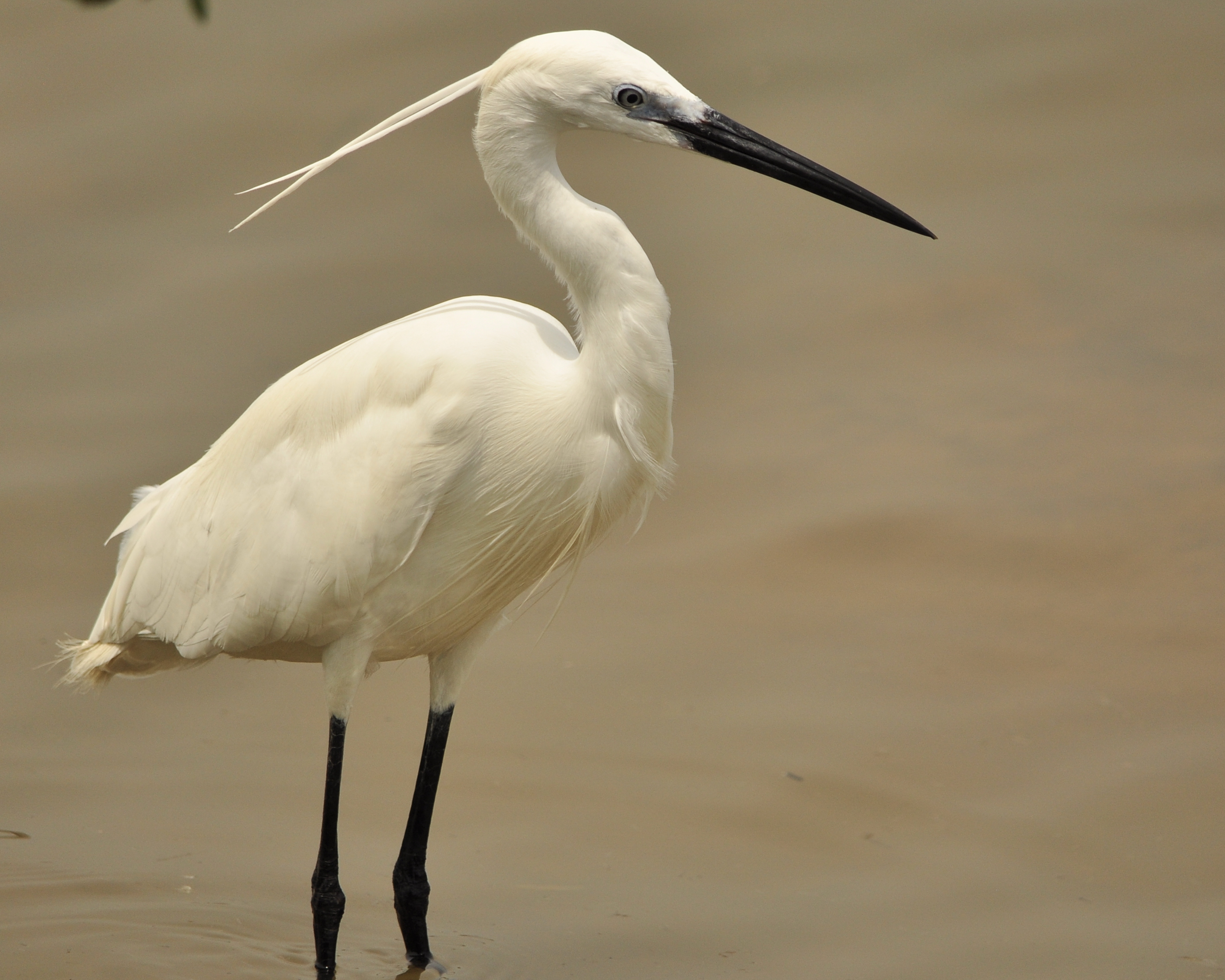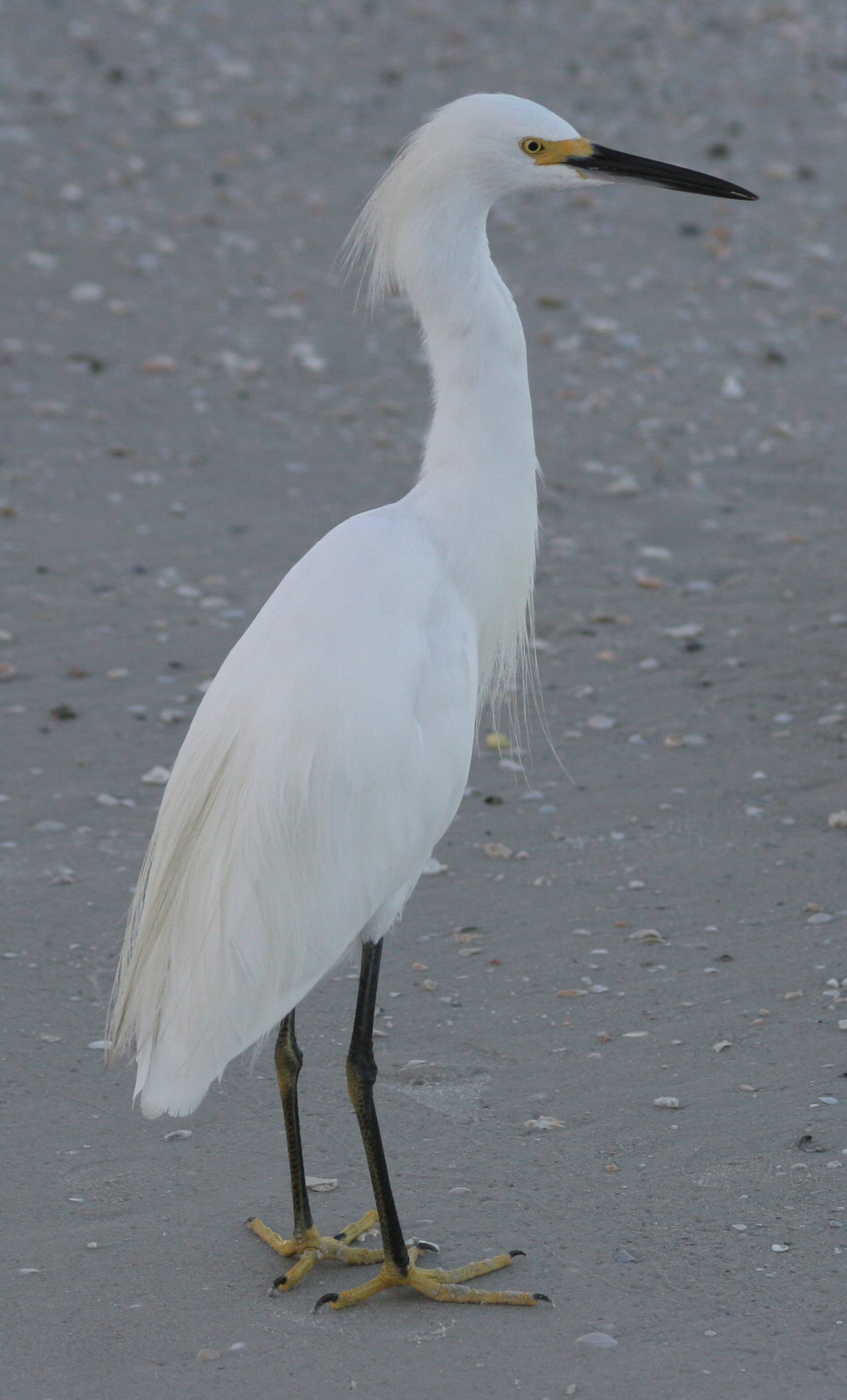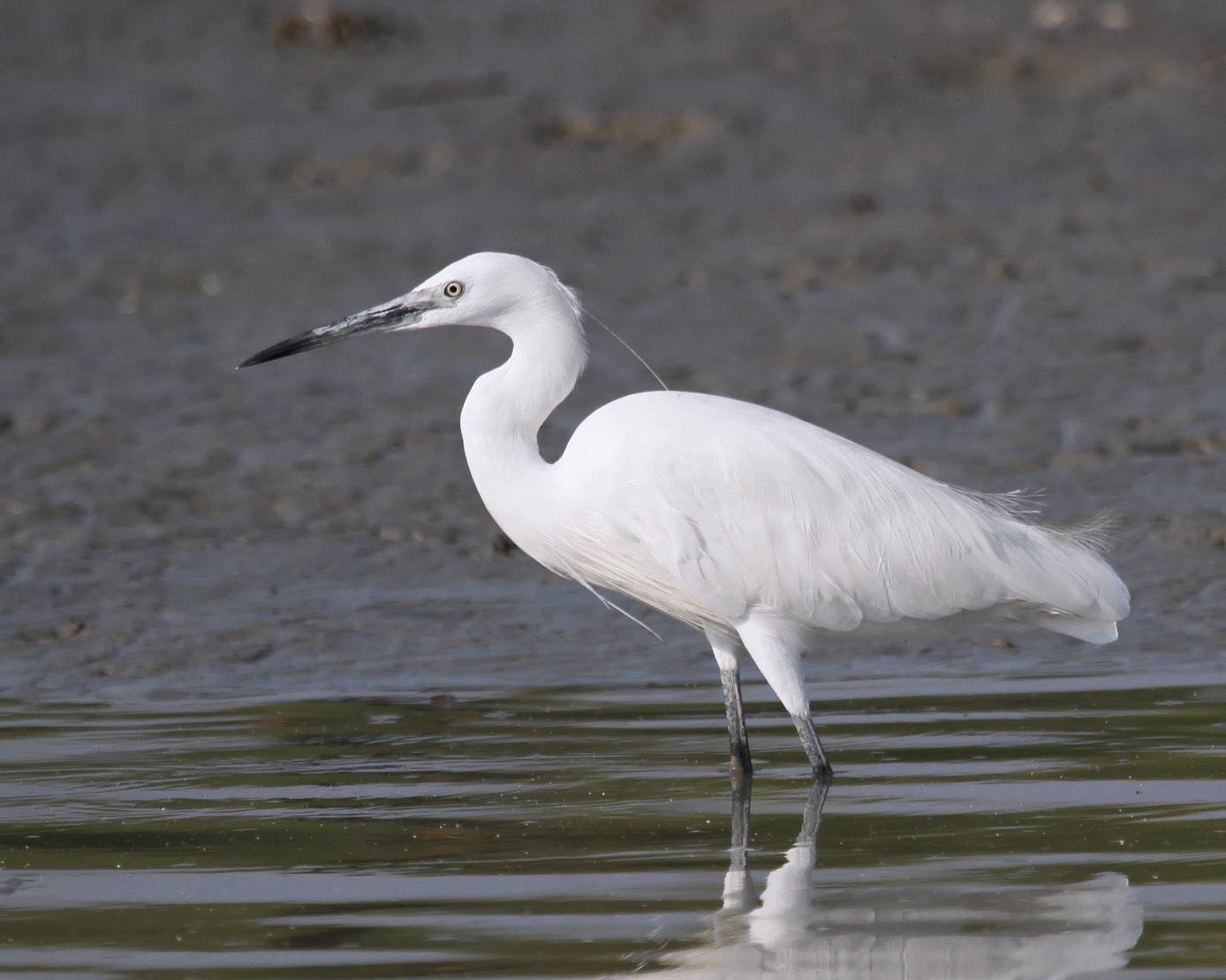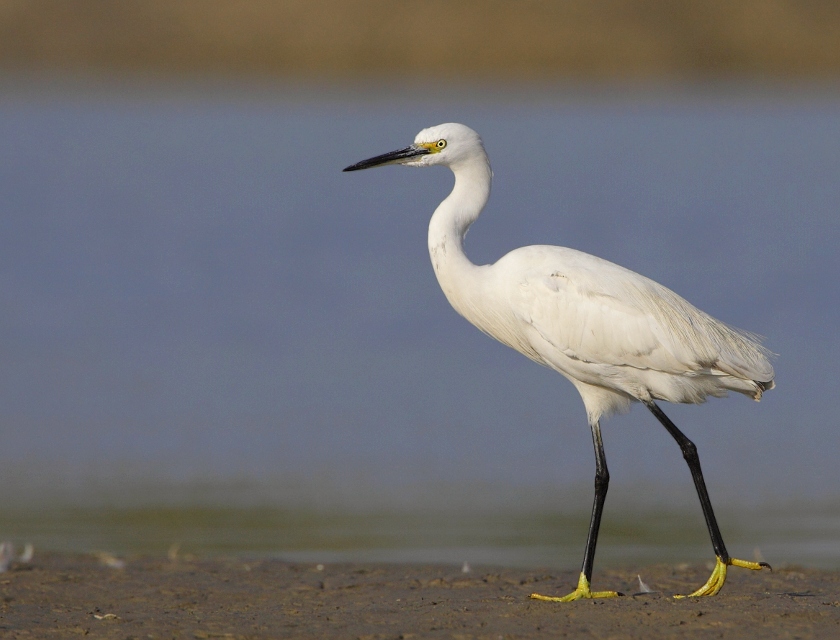
Egretta garzetta
SUBFAMILY
Ardeinae
TAXONOMY
Ardea garzetta Linnaeus, 1766, Malalbergo, Italy. Six subspecies.
OTHER COMMON NAMES
English: Lesser egret; French: Aigrette garzette; German: Seidenreiher;
Spanish: Garceta Comъn.
PHYSICAL CHARACTERISTICS
A thin, medium-sized heron, with a long thin neck and bill,
dark legs and yellow feet (in most forms). Length is 22–25.5 in
(55–65 cm); weight is 10–22.5 oz (280–638 g). In breeding it
has distinctive head, chest and back plumes, and red lores.
Some populations are dimorphic, having both dark and white
birds.
DISTRIBUTION
Occurs in Europe, Africa, Madagascar, Asia, East Indies, Australia,
Pacific Ocean islands. It has recently colonized the West
Indies.
HABITAT
Typically uses open or sparsely vegetated shallow to very shallow
water for feeding. Frequently uses artificial feeding habitats,
including rice fields, fish ponds, and irrigation pools. Occasionally
feeds in pasture and other dry land situations, and is known
to feed communally with cattle or other ungulates. Nests in
trees, bushes, or islands that offer protection and isolation.
BEHAVIOR
Highly social, usually seen in groups, either feeding in or at the
edges of shallow water bodies, roosting at midday or on high
tides, or nesting. Highly aggressive and territorial when feeding.
Runs or hops between feeding sites, opening its wings to startle
and chase down fish. Also uses such feeding
BEHAVIOR
s as using
floating bread or their bills to attract fish, following cattle, or
riding bathing water buffalo. Birds roost when not feeding, and
in the evening fly in small flocks to communal roosts.
FEEDING ECOLOGY AND DIET
Feeds in shallow, open, and unvegetated sites where water levels
and dissolved oxygen are fluctuating (tidally, seasonally, or
daily), where fish are concentrated in pools or at the water’s
surface. Typically feeds by walking slowly with the neck
stretched out through the water in search of fish or other prey,
stirring the substrate with its feet. Feeds in deeper water by
flying above the surface, dipping its bill into the water to catch
fish, or dragging its feet at the surface to frighten them into
movement. Switches habitats through the year, and feeds alone
or in groups. Follows other birds closely, frequently robs them
of prey, and is robbed in turn. Diet is mainly small fish, generally
only 0.4–2.4 in (1–6 cm) long. Also takes small birds,
lizards, snakes, frogs, toads and tadpoles, insects, prawns, amphipods,
crayfish, crabs, and many other invertebrates.
REPRODUCTIVE BIOLOGY
Breeding season varies across its range, spring in temperate areas
and most often at the peak or after the peak of the rainy
season in the tropics. Nests colonially, sometimes in mixedspecies
colonies that can number in the thousands. Coastal
birds tend to nest in smaller colonies or alone. Nests are small
platforms, 12–14 in (30–35 cm) wide. The eggs are variable
greenish blue, fading to off-white. Clutch size varies geographically,
with a range of two to eight. Incubation period is 21–25
days. Parents attend young for 10–15 days. Nestlings compete
for food, and the youngest birds typically die. Young leave the
nest at 35–50 days.
CONSERVATION STATUS
Not threatened. Loss of inland and coastal wetlands has occurred
throughout its range.
SIGNIFICANCE TO HUMANS
A well-known species because it occurs near and with human
populations.
Photo Gallery of - Little egret




 Animalia Life
Animalia Life